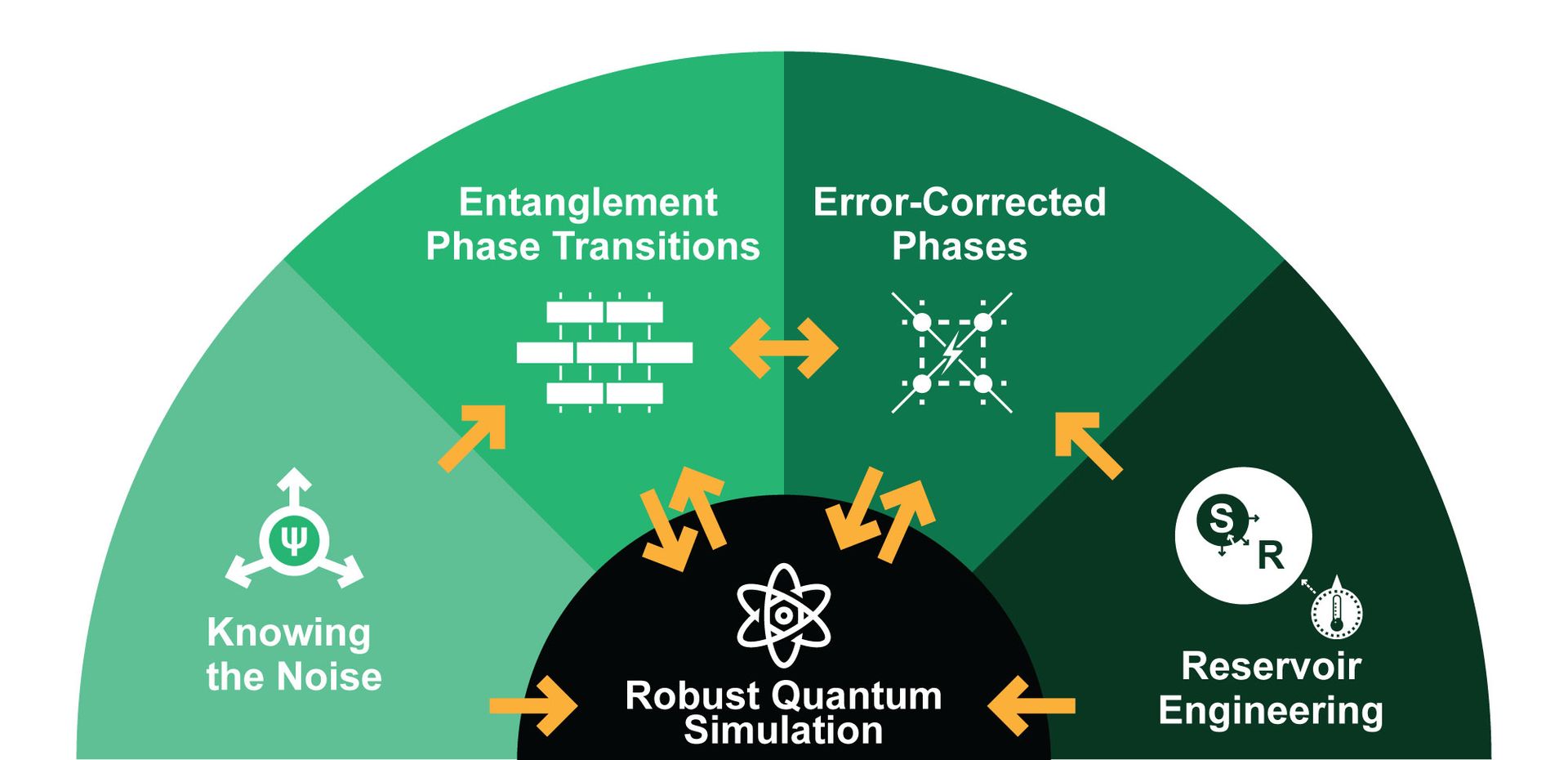RC2: Quantum Simulations Face the Environment

Information, either classical or quantum, is always in danger of being corrupted by noise. For quantum information, the effects of noise are especially disruptive. That’s because quantum information (stored in qubits) faces double the destructive possibilities compared to classical information (stored in bits), all while needing to remain under the tight control dictated by a quantum algorithm or other protocol.
Quantum error correction answers the problem of quantum noise by enlisting the help of extra qubits to spread quantum information around to protect it from local corruptions. Researchers expect quantum error correction to be an essential ingredient in the large, fault-tolerant quantum computers of the future, but it will also be an important ingredient in all scalable approaches to quantum simulation.
RQS researchers are pointing the techniques of quantum simulation inward to study the complex interaction between simulators themselves and their environments. For example, using quantum simulator platforms we are studying the statistical mechanics of fault-tolerance thresholds, as well as more general quantum thermodynamics of open quantum systems. Since quantum error correction involves complex interactions between many small quantum systems and a noisy environment, progress toward simulating the interplay between system and environment will reap benefits for quantum computers, quantum simulators and any other quantum devices that need to fight back against noise.
RC2 Co-Leads
RC2 Co-Lead
Co-PI, RC2 Co-Lead
Featured Publications
Fault-tolerant compiling of classically hard IQP circuits on hypercubes
, , arXiv, (2025)Logical quantum processor based on reconfigurable atom arrays
, , Nature, 626, 58–65, (2023)High-fidelity gates and mid-circuit erasure conversion in an atomic qubit
, , Nature, 622, 279–284, (2023)Quantum Error Correction with Metastable States of Trapped Ions Using Erasure Conversion
, , PRX Quantum, 4, (2023)Erasure conversion for fault-tolerant quantum computing in alkaline earth Rydberg atom arrays
, , Nature Communications, 13, (2022)Neural-Network Decoders for Measurement Induced Phase Transitions
, , Nature Communications, 14, (2023)s41467-023-37902-1.pdfPhase transition in magic with random quantum circuits
, , Nature Physics, (2024)


